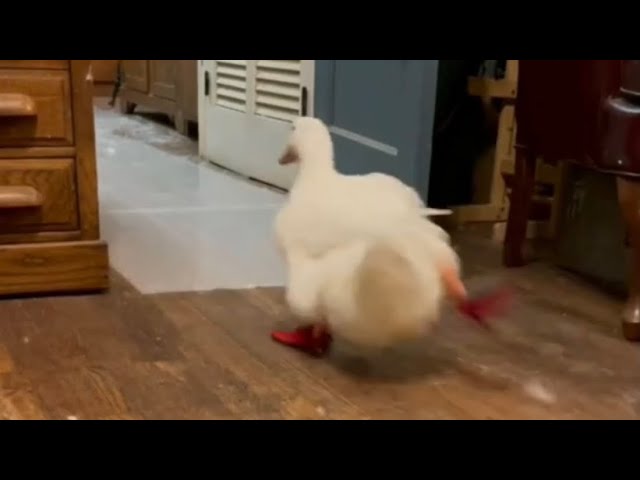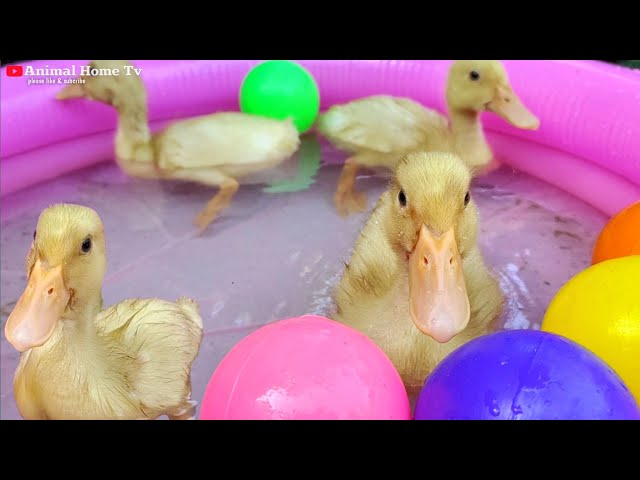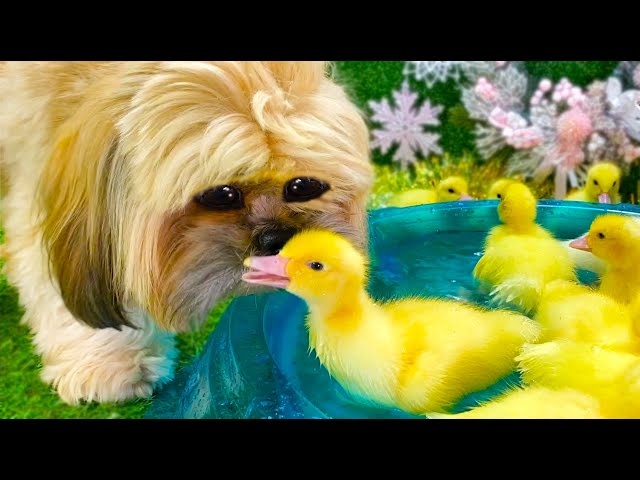The mallard is a medium-sized waterfowl species that is often slightly heavier than most other dabbling ducks. It is 50–65 cm (20–26 in) long – of which the body makes up around two-thirds – has a wingspan of 81–98 cm (32–39 in),[22]:505 and weighs 0.72–1.58 kg (1.6–3.5 lb).Among standard measurements, the wing chord is 25.7 to 30.6 cm (10.1 to 12.0 in), the bill is 4.4 to 6.1 cm (1.7 to 2.4 in), and the tarsus is 4.1 to 4.8 cm (1.6 to 1.9 in).
The breeding male mallard is unmistakable, with a glossy bottle-green head and a white collar that demarcates the head from the purple-tinged brown breast, grey-brown wings, and a pale grey belly. The rear of the male is black, with white-bordered dark tail feathers. The bill of the male is a yellowish-orange tipped with black, with that of the female generally darker and ranging from black to mottled orange and brown. The female mallard is predominantly mottled, with each individual feather showing sharp contrast from buff to very dark brown, a coloration shared by most female dabbling ducks, and has buff cheeks, eyebrow, throat, and neck, with a darker crown and eye-stripe.
Both male and female mallards have distinct iridescent purple-blue speculum feathers edged with white, which are prominent in flight or at rest but temporarily shed during the annual summer moult. Upon hatching, the plumage of the duckling is yellow on the underside and face (with streaks by the eyes) and black on the back (with some yellow spots) all the way to the top and back of the head. Its legs and bill are also black. As it nears a month in age, the duckling’s plumage starts becoming drab, looking more like the female, though more streaked, and its legs lose their dark grey colouring.
Two months after hatching, the fledgling period has ended, and the duckling is now a juvenile. Between three and four months of age, the juvenile can finally begin flying, as its wings are fully developed for flight (which can be confirmed by the sight of purple speculum feathers). Its bill soon loses its dark grey colouring, and its sex can finally be distinguished visually by three factors: 1) the bill is yellow in males, but black and orange in females;[self-published source] 2) the breast feathers are reddish-brown in males, but brown in females; and 3) in males, the centre tail feather (drake feather) is curled, but in females, the centre tail feather is straight. During the final period of maturity leading up to adulthood (6–10 months of age), the plumage of female juveniles remains the same while the plumage of male juveniles gradually changes to its characteristic colours. This change in plumage also applies to adult mallard males when they transition in and out of their non-breeding eclipse plumage at the beginning and the end of the summer moulting period. The adulthood age for mallards is fourteen months, and the average life expectancy is three years, but they can live to twenty.
Several species of duck have brown-plumaged females that can be confused with the female mallard. The female gadwall (Mareca strepera) has an orange-lined bill, white belly, black and white speculum that is seen as a white square on the wings in flight, and is a smaller bird. More similar to the female mallard in North America are the American black duck (A. rubripes), which is notably darker-hued in both sexes than the mallard, and the mottled duck (A. fulvigula), which is somewhat darker than the female mallard, and with slightly different bare-part colouration and no white edge on the
More information from: https://en.m.wikipedia.org/wiki/Mallard
——————————————————————————-
if you enjoy our video, please check our previous video:
✅https://youtu.be/Kfx4A5oeYhs
✅https://youtu.be/ArQYBsyvj1w
✅https://youtu.be/9ijWGXQwd5k
✅https://youtu.be/Y9ICoTPqd1c
Music: https://www.youtube.com/watch?v=yQjAF3frudY&feature=share
Usually we will upload various species of birds video so please stay with us.
——————————————————————————-
🔔Please subscribe to our youtube channel: https://lm.facebook.com/l.php?u=https%3A%2F%2Fwww.youtube.com%2Fchannel%2FUCcJW80ru5gioKabQRC13uEg%3Ffbclid%3DIwAR2OgPh21zlI2iLBs3baszFunppbR5lyFuCZixaICmEKbXCSQmy65ixZFnY&h=AT145gZ5yMXz5eJA-Z70miqIE8Uph94vC5TZHal0eYw6kRNyPOfgYBPudQmN_TAcRPsUZF0zFtXgK9FQevgi0e7ECCijLIOSxIDvDib-yRciLXFphTS4H2AZwESWDR0noPzfYw
🌍Visit our face book page: https://www.facebook.com/pg/Tradition-Hub-106400917887068/posts/?refid=12
if you want to watch our next video, please like, comment, share and subscribe our channel: https://lm.facebook.com/l.php?u=https%3A%2F%2Fwww.youtube.com%2Fchannel%2FUCcJW80ru5gioKabQRC13uEg%3Ffbclid%3DIwAR1hFnx5wzKhkyA-GCXIgsPG6MHBCzxMrSvCt6fYjdlV0xjXgQqklh0g9Ak&h=AT2FWWOPESx8N8hU8Jz8MKCEgnsx0VaQdKNEaXxRaoFYzxVKua5m_d1eAChmY54pftB1b-_BvkEblNuL3nw6nwqSSN9zkBVhJcr2TuAMe4thSub66xj5EeRlWLBRzWSH0wyN8A




